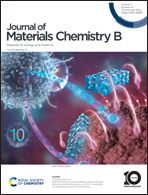Recent advances in tailoring stimuli-responsive hybrid scaffolds for cardiac tissue engineering and allied applications
Abstract
To recapitulate bio-physical properties and functional behaviour of native heart tissues, recent tissue engineering-based approaches are focused on developing smart/stimuli-responsive materials for interfacing cardiac cells. Overcoming the drawbacks of the traditionally used biomaterials, these smart materials portray outstanding mechanical and conductive properties while promoting cell–cell interaction and cell–matrix transduction cues in such excitable tissues. To date, a large number of stimuli-responsive materials have been employed for interfacing cardiac tissues alone or in combination with natural/synthetic materials for cardiac tissue engineering. However, their comprehensive classification and a comparative analysis of the role played by these materials in regulating cardiac cell behaviour and in vivo metabolism are much less discussed. In an attempt to cover the recent advances in fabricating stimuli-responsive biomaterials for engineering cardiac tissues, this review details the role of these materials in modulating cardiomyocyte behaviour, functionality and surrounding matrix properties. Furthermore, concerns and challenges regarding the clinical translation of these materials and the possibility of using such materials for the fabrication of bio-actuators and bioelectronic devices are discussed.

- This article is part of the themed collection: Journal of Materials Chemistry B Recent Review Articles


 Please wait while we load your content...
Please wait while we load your content...